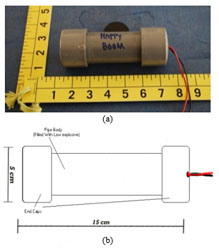Determination of anionic profiling of improvised explosive devices from different types of low explosive material
DOI:
https://doi.org/10.11113/mjfas.v10n3.268Keywords:
low explosive, ion chromatography, home-made explosive devicesAbstract
Improvised explosive devices or also known as homemade explosive devices are frequently abused for public terrorism. This types of explosive devices are well fabricated and made in improvised manner by incorporating military or commercially sourced explosive. It is often used for terrorism as the material of the devices are readily available at low cost and can be obtain legally without any suspicion from the sellers. Chemical composition of explosives holds a lot of useful information in establishing a link between a perpetrator and a bombing case. Analysis of post-blast explosive and pre-blast explosive is equally important since the chemical reaction during explosion will change the product of the composition. Different types of explosive material are also expected to give different composition profiling. In this study, four types of pyrotechnics explosives packed in pipe bombs were utilized via sampling exercise. Cotton swabbing technique was employed as method extraction as it is easy to perform, rapid, less solvent use and lab time are reduced.The determination of anionic inorganic constituents of improvised explosives were performed using ion chromatography. Post blast residues were analyzed to compare the changes of inorganic ions to its origin from pre blast samples. Inorganic ions were separated using Metrosep A SUPP 5 column and an eluent consisting of 1.0 mmol/L of NaHCO3 with 3.2 mmol/L Na2CO3. Anions of interest including NO2-, NO32-, PO42-, SO42-, SCN-, and ClO4- have been successfully separated within 60 minutes. Types and amount of anion detected are different from different materials of explosive devices.
________________________________________
GRAPHICAL ABSTRACT

References
U.K. Ahmad, O.S. Tze, M.F. Ghazali, Y.C. Hooi, and M.K. Abdullah, Malays. J. Anal. Sci. (2011). 213.
Atlantuya Murder: It's Death for Azilah and Sirul (2009 April 9). The Star Online. Retrieved from http://thestar.com.my/news/story.asp?file/2009/4/9/nation/20090409093431&sec=nation.
D. Royds, S.W. Lewis, and A.M. Talanta, 67(2) (2005) 262.
Five injured in two of three explosions outside KL Court (2012 January 9). The Sundaily Online. Retrieved from http://www.thesundaily.my/news/261108.
GE13: Man slightly injured in rubbish dump explosion near BN ceramah (2012 April 24). The Star Online. Retrieved from http://thestar.com.my/news/story.asp?file=/2013/4/24/nation/13017441&sec=nation.
Akhavan, J. The Chemistry of Explosives. 2nd ed. U.K: The Royal Society of Chemistry, (2004) 18.
U.K. Ahmad, and K.K. Heng, J. Teknologi C. 46 (c). (2007) 59.
S. Ladham, A.S. Koehler, P. Woods, R. Huston, J. Dominick, W.F. Fotchman, and H.C. Wecht, J Clin Forensic Med, 12(2): (2005) 82.
R. Varga, P. Ulbrich, AARMS vol. 3, No. 4, (2004) 633.
HB. Meng, TR. Wang, BY. Guo, Y. Hashi, CX. Guo, JM. Lin, Talanta. 76(2) (2008) 241.
R. Saferstein, Criminalistics: An Introduction to Forensic Science. (9th Ed). New Jersey: Person Prentice Hall. 2007.
B.R. McCord, K.A. Hargadon, K.E. Hall, and S.G. Burmeister, Anal. Chim. Acta. 288 (1994) 43.



















